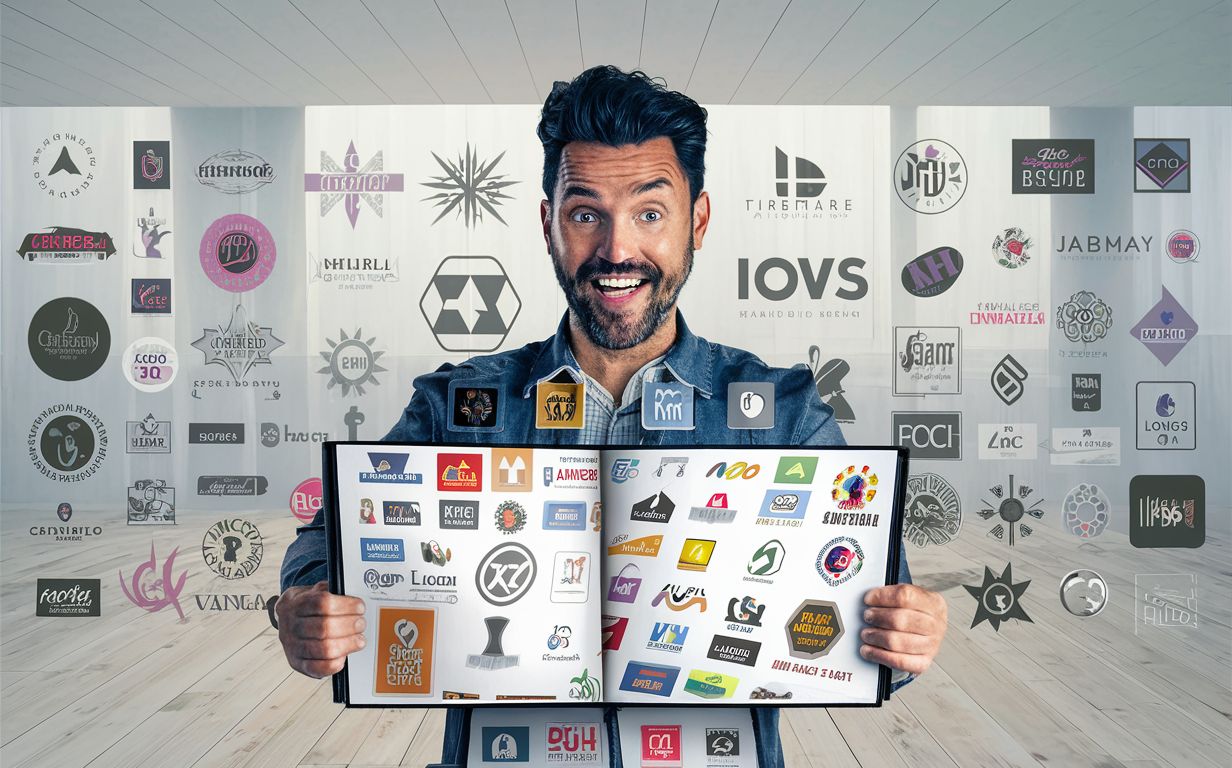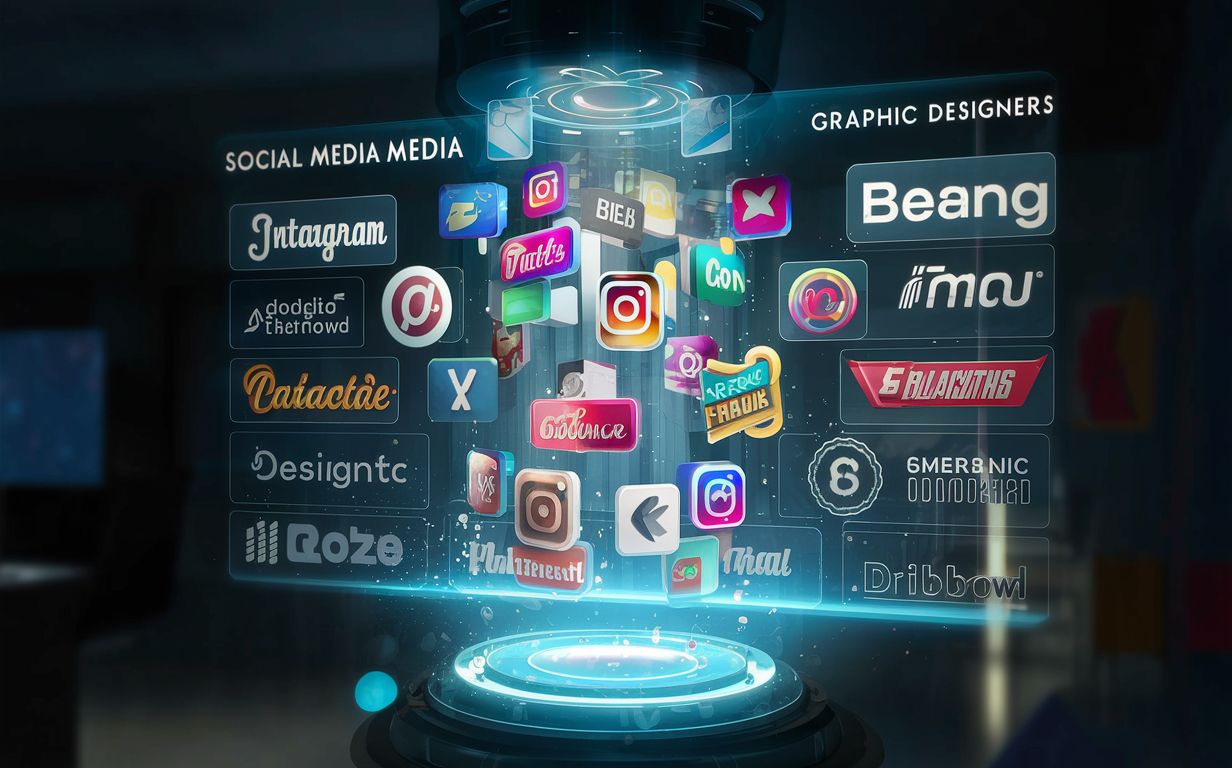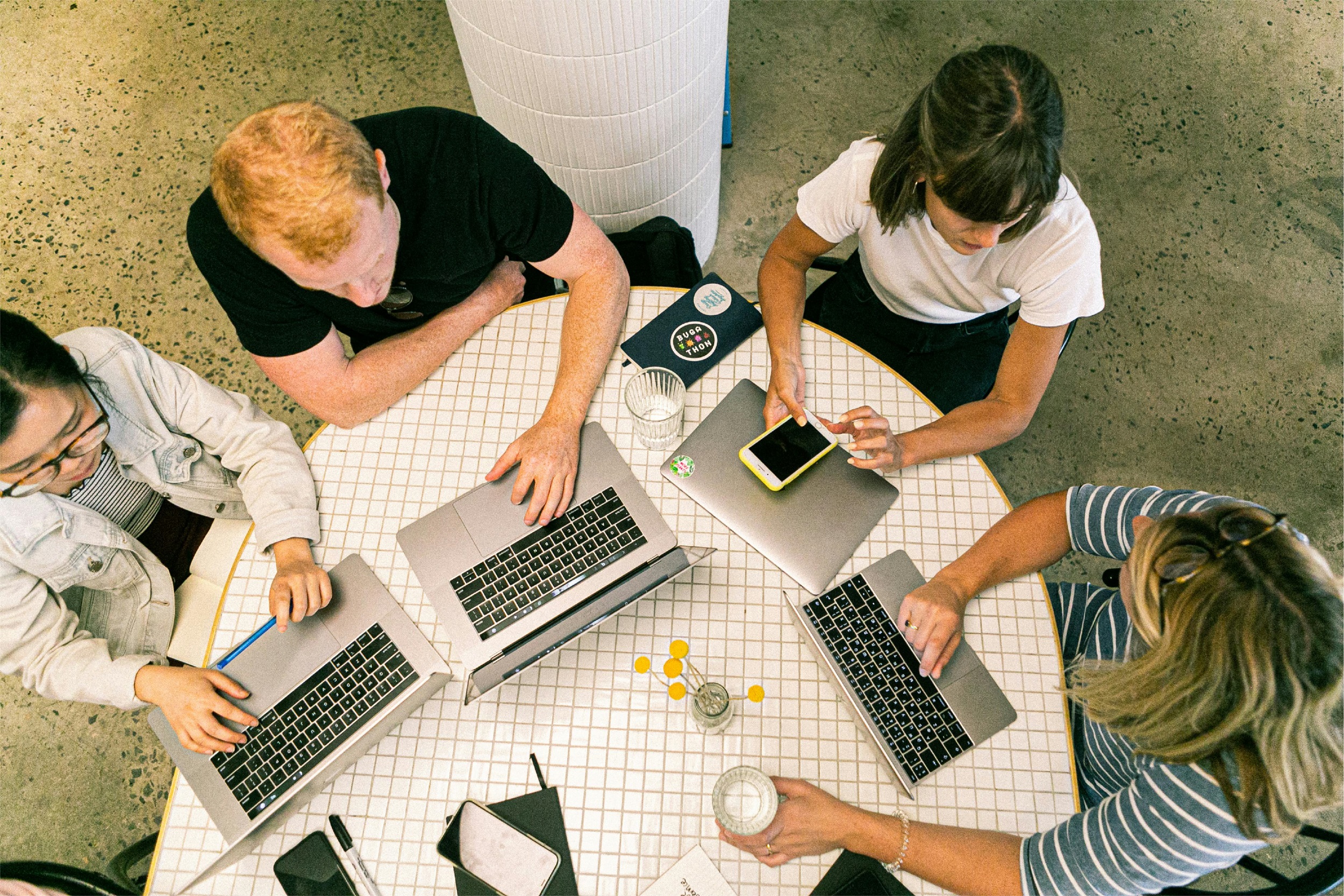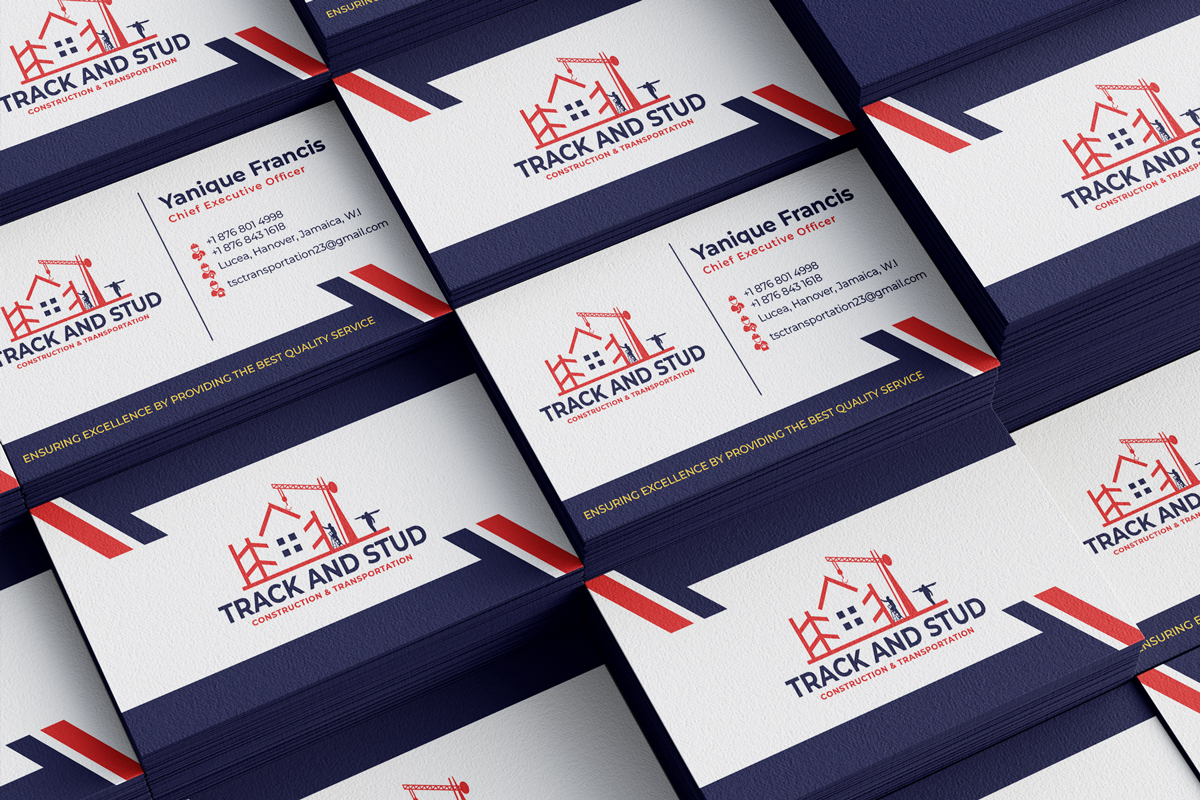HOW TO MARKET YOURSELF AS A GRAPHIC DESIGNER
By Romario Lemon – 8 min read, January 2, 2024

Welcome to the dynamic world where creativity meets strategy—where being a graphic designer isn’t just about envisioning stunning visuals but also about propelling your craft into the spotlight. According to the graphic design statics by Colorlib, there are over 250,000 graphic designers in the United States alone, making it imperative for aspiring designers to navigate the competitive landscape with savvy marketing skills.
So, you’re rocking those design projects, but ever thought about the art of self-promotion? It’s not just about showcasing your skills; it’s about shouting it from the digital rooftops so clients know where to find you. The goal isn’t just to survive in the bustling design arena but to thrive by blending your artistic genius with effective marketing techniques. Let’s delve into why marketing is your secret weapon in the world of graphic design.
Why Is It Important?
Visibility is Key: In a sea of designers, you want to be the lighthouse that clients spot from miles away. Marketing ensures your visibility in a competitive market.
Client Magnet: Clients won’t magically find you. You need to be the magnetic force pulling them in. Marketing is the magic wand that attracts potential clients to your design kingdom.
Career Growth: The more visible and in-demand you are, the faster your career can skyrocket. Marketing is the jet fuel propelling your graphic design journey.
Overcoming Marketing Challenges
Now, we get it. Marketing might feel icky, especially when you’re more comfortable with colour palettes than elevator pitches. But fear not! We’re here to guide you through strategies that not only work but also feel authentic. Let’s turn those marketing challenges into creative opportunities.
What Challenges Are We Tackling?
Authenticity vs. Sales Pitch: Graphic designers often worry about sounding too salesy. We’ll explore how to maintain authenticity while still showcasing your skills effectively.
Where to Begin: With so many marketing avenues, where should a graphic designer start? We’ve got your back with a step-by-step guide to ease you into the marketing game.
IDENTIFY YOUR NICHE

Alright, Picasso of Pixels, time to zoom into your unique corner of the design universe.
Why is it Important?
Stand Out in the Crowd: Since there are around 250,000 graphic designers in the U.S. alone. Niche specialization (e.g., logo design, packaging) helps you stand out among the design crowd.
Increased Demand: The Bureau of Labour Statistics expects over 7,000 new graphic design jobs in the next decade. By specializing, you align yourself with specific industry needs, making you more in-demand.
CREATE A STRONG PORTFOLIO

Consider your portfolio as your visual resume, and boy, does it matter.
Why Is It Important?
Show, Don’t Tell: Your portfolio is a visual feast of your skills. Potential clients want to see what you can do, not just read about it. It’s your design story in pixels.
First Impressions Matter: Clients often make snap judgments. A strong portfolio is your chance to make a killer first impression. Make it count!
Building Credibility: A well-curated portfolio builds your credibility as a designer. It’s like saying, “See, I’ve got the chops!”
Statistics: According to a survey by Creative Bloq, 63% of employers prefer a strong portfolio over work experience when hiring designers.
BUILD AN ONLINE PRESENCE

Time to embrace the digital playground. Instagram, LinkedIn, or your own website—choose wisely.
Why Is It Important?
Global Reach: The internet connects you with clients worldwide. It’s a 24/7 showcase of your skills, accessible to anyone with a Wi-Fi connection.
Industry Visibility: Many designers land gigs through online platforms like Behance or 99designs. Your online presence acts as a virtual storefront, attracting potential clients.
Client Research: Before hiring, clients often check online profiles. An active online presence assures them you’re not just a phantom designer but a real, active player in the design game.
Statistics: According to Hootsuite, over 3.6 billion people use social media globally. Your online presence taps into this massive audience.
NETWORK AND COLLABORATE

Design doesn’t happen in a vacuum. Connect with fellow creatives, join forums, and let collaboration be your superpower.
Why Is It Important?
Learning and Growth: Networking exposes you to different perspectives, new tools, and industry trends. It’s like a design classroom without the homework.
Referrals and Collaborations: Networking opens doors to collaborations and referrals. A fellow designer might throw a project your way, or a contact might recommend your services.
Community Support: The design community is your support system. Share experiences, seek advice, and celebrate each other’s victories. It’s the camaraderie that keeps you going.
Statistics: According to LinkedIn, 85% of jobs are filled through networking. It’s not just what you know; it’s who you know.
ASK FOR REFERRALS AND TESTIMONIALS

Your satisfied clients are your best promoters. Don’t shy away from asking for referrals and testimonials.
Why Is It Important?
Trust Building: Testimonials build trust. When potential clients see positive experiences from others, they’re more likely to trust your skills.
Word of Mouth: Referrals are a powerful marketing tool. People trust recommendations from friends or colleagues. It’s like having an army of promoters spreading the word about your design prowess.
Client Retention: Happy clients who refer you are more likely to come back for future projects. It’s a cycle of satisfaction and loyalty.
Statistics: According to Nielsen, 92% of consumers trust recommendations from friends and family more than any other form of advertising.
KEEP LEARNING AND IMPROVING

The design world evolves. Stay ahead by embracing continuous learning and improvement.
Why Is It Important?
Stay Relevant: Design trends change faster than Instagram filters. Continuous learning ensures you stay relevant and offer designs that resonate with current aesthetics.
Expand Skill Set: Learning new tools or techniques expands your skill set. The broader your skill palette, the more versatile and in-demand you become.
Competitive Edge: In a rapidly changing industry, staying on top of trends gives you a competitive edge. Clients love designers who bring fresh, trendy perspectives to the table.
Statistics: According to a LinkedIn survey, 94% of employees would stay longer at a company if it invested in their learning and development.
ADDITIONAL CONSIDERATIONS
Sometimes, the guidebook doesn’t cover everything. Here’s where you unleash your personal flair.
Why Is It Important?
Uniqueness: Your additional considerations are what make you unique. It might be a quirky design philosophy, a personal project, or a passion project. Let your personality shine.
Client Connection: Sharing personal insights builds a connection with clients. It’s not just about the designs; it’s about the person behind the designs.
TARGET LOCAL COMPANIES

Local love is strong. Improve local businesses’ online game and let them know you’re the design wizard they’ve been searching for.
Why Is It Important?
Community Impact: Local businesses are the backbone of communities. By helping them with your design skills, you contribute to local economic growth.
Word Spreads Fast: Local communities thrive on word-of-mouth. Impress one local business, and soon others will be knocking on your virtual door.
Networking Opportunities: Local events and business gatherings offer networking opportunities. You become a face, not just a name on a website.
Statistics: According to a survey by SCORE, 97% of consumers search online for local businesses. Your online presence can make you the go-to local designer.
MAINTAIN A REGULARLY UPDATED BLOG

Blogging isn’t just for wordsmiths. Showcase your projects, share your process, and let the world peek into your design universe.
Why Is It Important?
Content is King: A blog establishes you as an authority in your niche. Regular, informative posts showcase your knowledge and passion for design.
SEO Boost: Blogs improve your website’s SEO. Search engines love fresh, relevant content. A well-optimized blog can boost your website’s visibility.
Client Education: Educate your clients. Blogs provide a platform to explain design processes, trends, and the value you bring to the table. An informed client is more likely to appreciate your work.
Statistics: According to HubSpot, businesses that blog receive 97% more links to their website. It’s not just about clients; even search engines love a good blog.
CREATE A PHYSICAL BUSINESS CARD
Yes, we live in a digital age, but a well-designed physical card can work wonders, especially for local outreach.
Why Is It Important?
Tangible Impression: Physical business cards leave a tangible impression. They’re not easily forgotten in a crowded digital space.
Local Presence: For local businesses, a physical card is a powerful local marketing tool. It’s a personal touch that digital interactions sometimes lack.
Networking Essentials: In face-to-face interactions, a physical card is a networking essential. It’s a professional touch that signals you mean business.
Statistics: According to Statistic Brain, for every 2,000 business cards distributed, a company’s sales increase by 2.5%. That small piece of card holds more power than you think.
USE A SEARCH ENGINE OPTIMIZATION (SEO) COMPANY

Don’t be shy to ask for help. SEO experts can sprinkle their magic dust, making your online presence shine.
Why Is It Important?
Visibility Boost: SEO is the wizardry that gets your website noticed. When potential clients search for graphic designers, you want your website to pop up on their screens.
Competitive Edge: In a digital era, everyone’s vying for attention. SEO puts you ahead in the online race. A well-optimized website is more likely to attract clicks.
Adapt to Algorithms: Search engines constantly evolve. SEO experts stay on top of these changes, ensuring your website stays at the forefront of search results.
Statistics: According to Moz, 93% of online experiences begin with a search engine. If your website isn’t optimized, you’re missing out on a massive chunk of the online audience.
RECAP OF KEY STRATEGIES

Phew! That was quite a journey through the marketing galaxy, wasn’t it? Let’s quickly revisit the key strategies:
- Identify Your Niche: Stand out by specializing in a design niche.
- Create a Strong Portfolio: Your visual resume is your ticket to client trust.
- Build an Online Presence: Embrace the digital playground for a global reach.
- Network and Collaborate: Design is a team sport; collaborate and grow.
- Ask for Referrals and Testimonials: Let your satisfied clients sing your design praises.
- Keep Learning and Improving: Stay ahead in the design game with continuous growth.
- Additional Considerations: Unleash your unique design flair for a personal touch.
- Target Local Companies: Local love builds community impact and word-of-mouth marketing.
- Maintain a Regularly Updated Blog: Educate, engage, and boost your website’s SEO.
- Create a Physical Business Card: Tangible impressions still matter in a digital age.
Conclusion
In conclusion, navigating the realm of marketing as a graphic designer is not about losing your creative essence but enhancing it. This journey is a symbiotic dance between showcasing your artistic prowess and understanding the strategic steps that elevate your visibility. From identifying your niche and creating a compelling portfolio to embracing the digital stage, collaborating with peers, and seeking referrals, each step plays a vital role in shaping your success story.
Maintaining a consistently updated blog, crafting a tangible business card, and utilizing the power of social media and SEO are like the harmonious notes that compose your unique design melody. The journey involves not just self-promotion but the creation of authentic connections and fostering long-term relationships. Your marketing efforts, when approached with dedication, can turn satisfied clients into your most potent advocates, expanding your reach and leaving an indelible mark in the design landscape.
In this adventure, marketing is not the antagonist; it’s the ally that propels your design narrative to new heights. So, fellow design warriors, embrace the marketing realm with the same passion and creativity you infuse into your design projects. Let your designs be iconic, and your marketing strategies—legendary!
Ready to kickstart your brand with a standout identity? Don’t be a stranger – reach out and let’s make magic happen!
Related Post
I didn’t mean literally! Hear me out. Selling yourself is like giving others the lowdown on your …
In the dynamic realm of creative entrepreneurship, graphic designers are increasingly venturing into the exciting terrain of …
Leave A Comment Cancel Reply
Delivering original, refined, and distinctive designs crafted to make a lasting impact and set you apart as a leader in your field, surpassing your competitors.
TEAM UP WITH ME
Ready to kickstart your brand with a standout identity? Don’t be a stranger – reach out and let’s make magic happen!















You made some really good points on your post. Definitely worth bookmarking for revisiting. Also, visit my website Webemail24 for content about Social Bookmarking Sites.